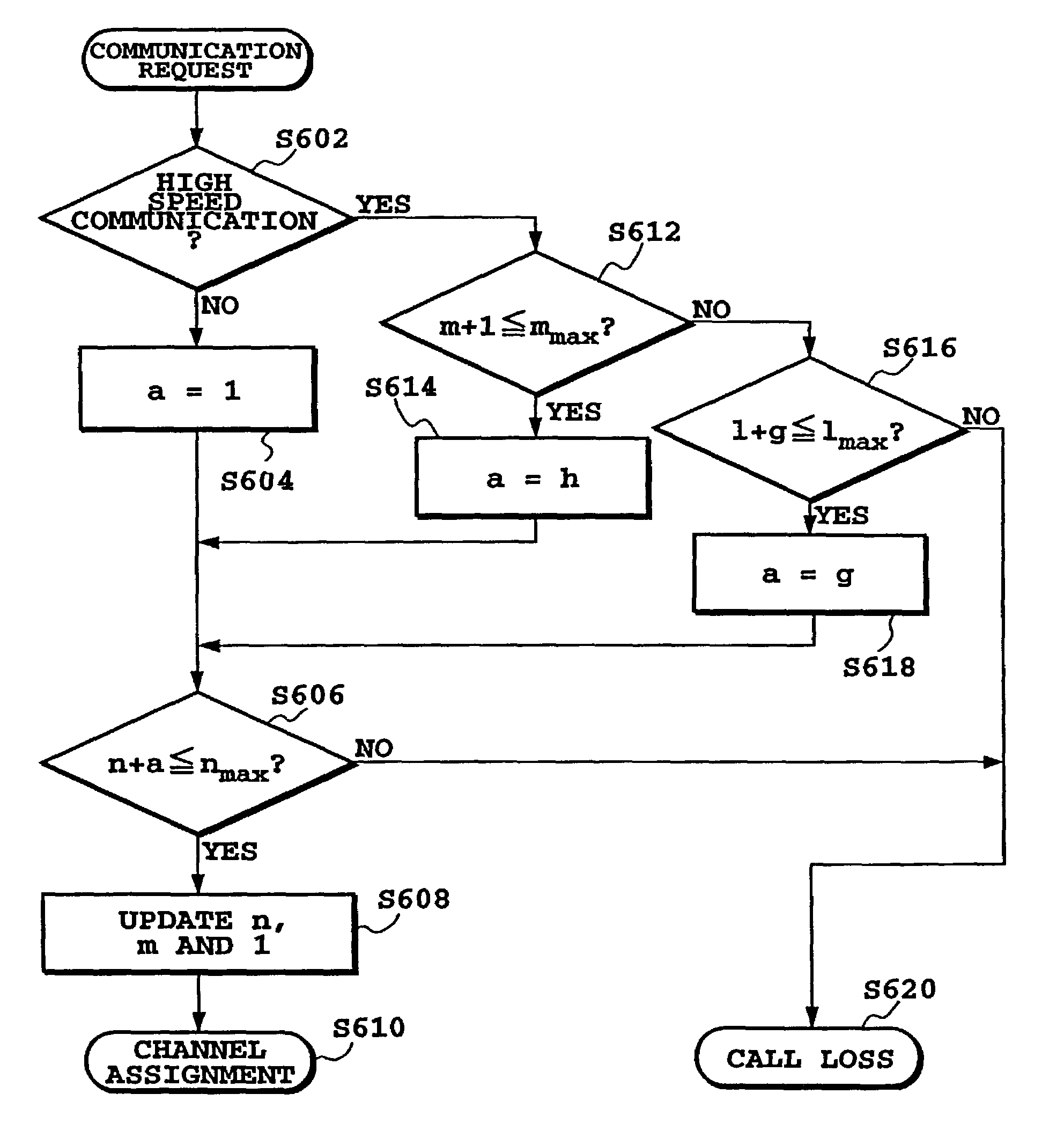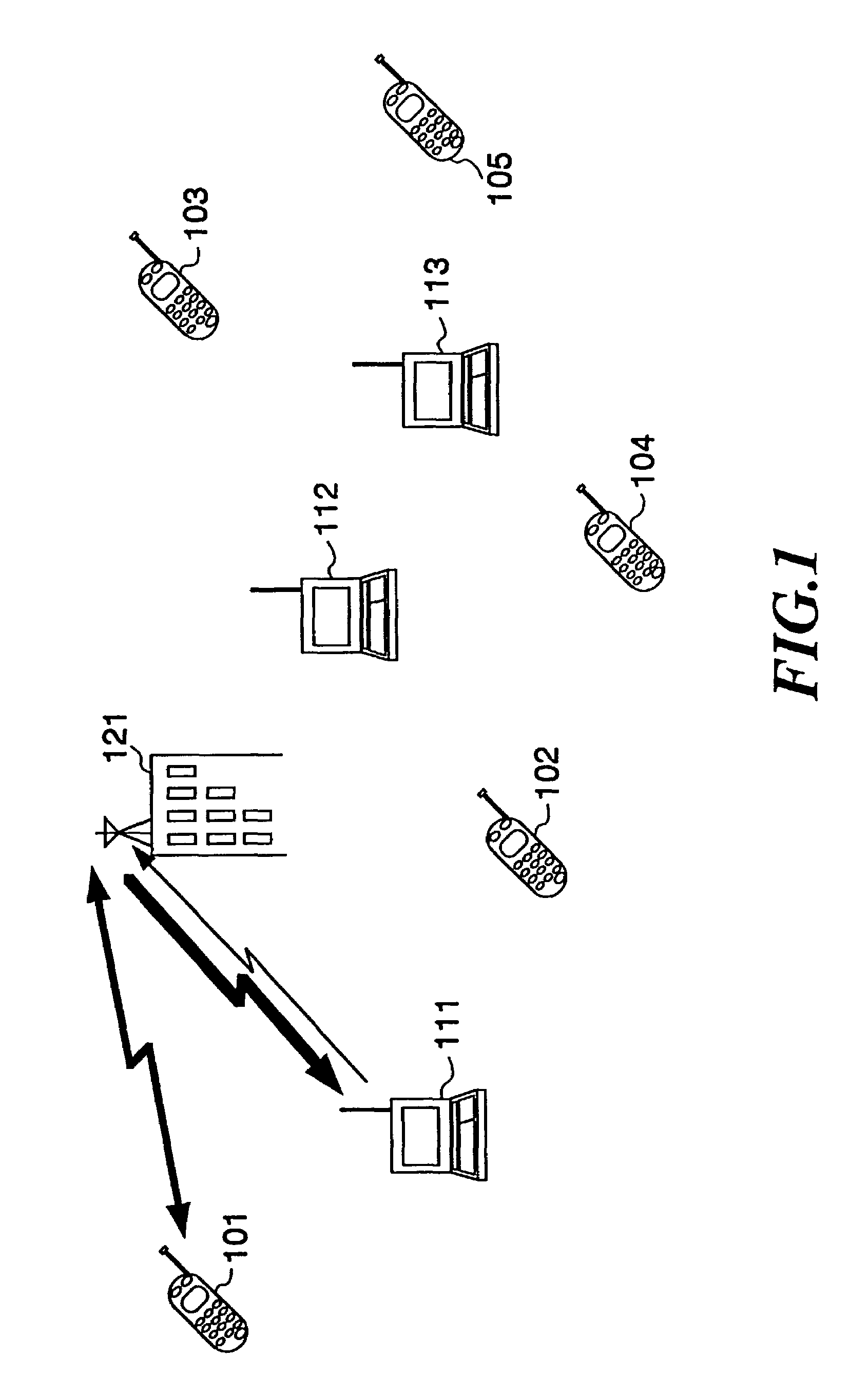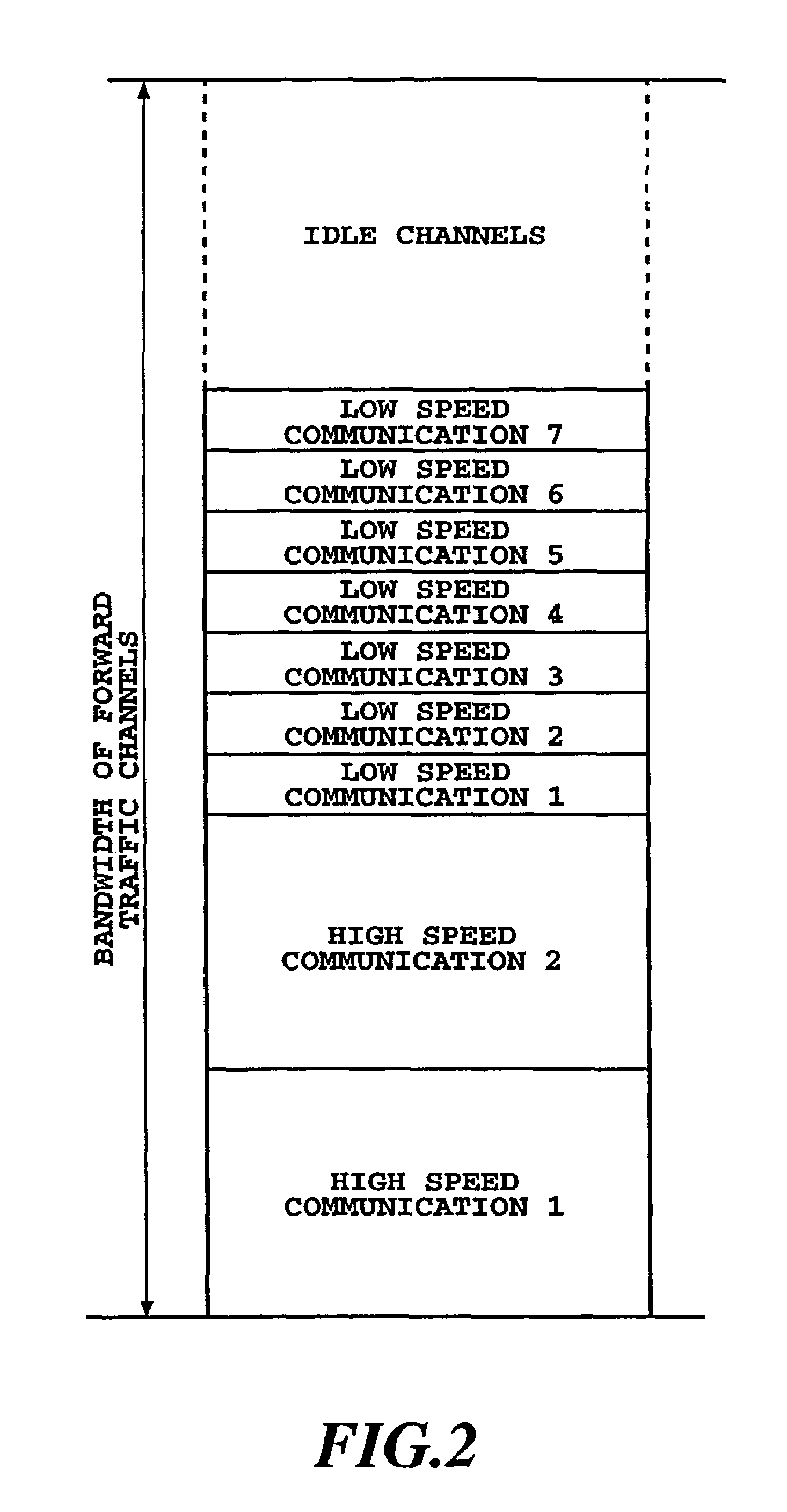Signal transmission method and base station in mobile communication
a signal transmission and mobile communication technology, applied in the field of signal transmission methods and base stations in mobile communication, can solve the problems of insufficient study of forward channels, inability to carry out simultaneous multiple communications at different transmission rates, and inability to study efficient signal transmission methods in conventional cellular mobile communications. to achieve the effect of efficient simultaneous communications
- Summary
- Abstract
- Description
- Claims
- Application Information
AI Technical Summary
Benefits of technology
Problems solved by technology
Method used
Image
Examples
first embodiment
[0028]FIG. 2 is a diagram illustrating signal transmission over forward traffic channels in the present invention, which illustrates bandwidths of forward traffic channels, and a present state of the channels in use. This example is one of the CDMA mobile communications including two communication types: low speed communications and high speed communications. The high speed communications each use a bandwidth four times that of the low speed communications. When the low speed communications occupy the entire band, it can accommodate 20 communications, whereas when the high speed communications occupy the entire band, it can accommodate five communications.
[0029]In the following description, it is assumed that the upper limit of the high speed communications is two. In the example of FIG. 2, two high speed communications and seven low speed communications are taking place. Although the bandwidth as shown in FIG. 2 can afford to accommodate another new request for the high speed commu...
second embodiment
[0037]The second embodiment relates to the control in a base station which can place a speed limit on the high speed communication between the base station and mobile stations. In this case, even if the total number of the high speed communications exceeds a (first) threshold value due to a new high speed communication request, the new communication is allowed with a limited rate. To achieve such control, the base station sets a second threshold value which is greater than the first threshold value, and performs such control that rejects a new high speed communication if the sum total of all the current communications exceeds the second threshold value.
[0038]For example, assume that the first threshold value used for the speed limit is two, and the second threshold value used for the traffic control is 18 expressed in terms of the number of the low speed communications, and that the transmission rate under the speed limit is twice the rate of the low rate communication. In addition,...
third embodiment
[0049]Actual CDMA mobile communications carry out the transmission power control, and the capacity in terms of the number of users can be limited by the total transmission power. In such a case, it is more effective to control the traffic in accordance with the transmission power rather than the number of the communications. Although increasing transmission power is required with an increase in the transmission rate, the transmission power will vary depending on locations of mobile stations, traffic (an interference amount) of the communications, and the like, even under the same transmission rate.
[0050]The third embodiment in accordance with the present invention controls the reception control of a high speed communication using an upper limit of the transmission power.
[0051]FIGS. 7A and 7B shows an example of transmission power conditions of the base station in the third embodiment in accordance with the present invention. In FIGS. 7A and 7B, the high speed communications 1 and 2 ...
PUM
 Login to View More
Login to View More Abstract
Description
Claims
Application Information
 Login to View More
Login to View More - R&D
- Intellectual Property
- Life Sciences
- Materials
- Tech Scout
- Unparalleled Data Quality
- Higher Quality Content
- 60% Fewer Hallucinations
Browse by: Latest US Patents, China's latest patents, Technical Efficacy Thesaurus, Application Domain, Technology Topic, Popular Technical Reports.
© 2025 PatSnap. All rights reserved.Legal|Privacy policy|Modern Slavery Act Transparency Statement|Sitemap|About US| Contact US: help@patsnap.com



